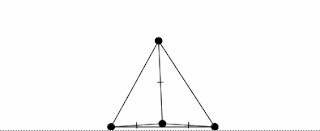Particles suspended in fluids may diffuse and exhibit random-like motion.
If we stop their motion as they get close to other stopped particles they will create fractal-shaped figures known as Diffusion Limited Aggregates. So the algorithm of the simulation is simply:
1. assign the first "stopped" particle (i. e. in the origin of the system)
2. choose random positions of N particles (the best would be far from the origin)
3. for each particle:
- randomly choose direction of motion
- move the particle
- if any of its neighbours is "stopped" -> stop it.
4. continue the loop 3.
This physical mechanism is simple yet brings beautiful results. Also, it is really simple to code and used i.e. during our classes to teach programming as well as simple modelling. Examples of such figures are below. They are all done with a simple full-screen HTML app I wrote to visualize DLA for purpose of my lectures. Enjoy, it's free.

